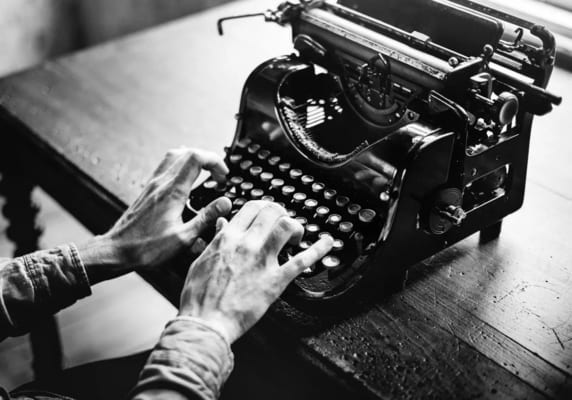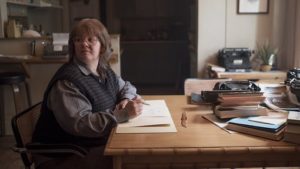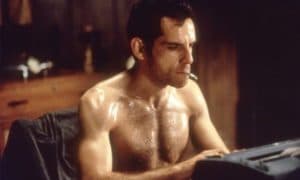Why a Beat Sheet is Important to Your Screenplay
Whilst inspiration can strike at any minute and writing can be incredibly spontaneous business, screenwriting is usually smoothest when you’ve got a solid plan. Organization and outlining are crucial to the process. The best outlining technique to use, is The Beat Sheet.
What is a Beat Sheet?
A beat sheet is a form of outlining that many screenwriters and authors use to map out their story.
Unlike some outlining techniques though, beat sheets are comprised of short bullet points rather than full sentences. These bullet points are your beats, or the main pivotal and emotional points in your screenplay.
- The goal is to gather together all of these beats into one place and to organize them in a logical, impactful way that will further guide the direction and structure of your screenplay.
At its core, beat sheets are really simple – they’re just a list of major plot events and important frames to help make writing a little easier.
However, everybody has an opinion about how many and what beats you should include. There’s no one absolute, correct answer but around 15 major beats spread throughout the various acts of the story tends to give the best results.
Benefits and Importance of a Beat Sheet
So why is a beat sheet an important tool for your screenplay?
A beat sheet can function as a skeleton for your story. Most other types of outlines are less structured than a beat sheet and less all-encompassing of the story. Most outlines are general and don’t give as much clue as to the drama and emotion within.
The traditional outlining we’re all used to is not specific to one kind of writing. It can be used for everything from academic papers to speeches to novels.
Beat sheets are specifically for storytelling within screen and their set up is reflective of that.
- In short, beat sheets are made to cover all the major scenes that a great screenplay needs and they go beyond the traditional Three Act Structure.
- They are to help guide you through everything from the opening scene to the inciting event to the eventual rock-bottom to the final triumph.
Once you write down everything surrounding these key plot points, your writing is made infinitely easier. Why? Because you’ve already done the hard part! What you need to do after that is fill in the gaps rather than decide on the big stuff.
- Beat sheets are also useful because they help you fully inhabit the world you’ve created.
- It no longer seems like a big, abstract concept and rather like a real universe that you can work with and in.
- Your characters also then have substance.
Once you have a beat sheet finished, you really know your protagonist and supporting cast. You understand where they are and where they’re going. Once you have that figured out, the rest practically writes itself (well you know, sort of).
Our Beat Sheet Recommendations
As we briefly touched on previously, there’s a ton of ways you can set up your beat sheet.
However, these are the major beats we believe you should include to create the best framework for your screenplay.
After you have these, the rest is up to you! Remember that these don’t always have to be strict rules to follow but they are conclusions to effective storytelling patterns and a great base for you to work off.
Beat 1. Opening Frame
Make sure this beat grabs the audience’s attention and sets the tone for the story you’re about to tell.
Additionally, this is also where you start to establish the main character’s driving force or problem.
For example, if your screenplay is about a man struggling with the death of his parents we need to see at least a hint of that here. You could open the script with him at a funeral, looking through an old photo album. Just include something of the overall story in this first beat.
Beat 2. Introduce the World
Of course, the second beat has to establish the world your characters live in. After all, it gives your screenplay dimension, a sense of reality, and gives your characters/plot a context.
- Where is the story taking place?
- What is the culture like?
- What are the people like?
- Does your story take place in the past, present, or future, and is it the past, present, or future we know or is it something different?
All of these are important questions you need to answer in this beat. It may seem tempting to skimp on the details in your beat sheet, but don’t!
As we’ve discussed, the power of the beat sheet is that it forms a great skeleton and foundation for when you really get to writing. Put in the hard work now so that it comes easier later.
Beat 3. Meeting the Characters
Now that we have a general idea of the world and what the screenplay’s focus might be about, we need to meet our protagonist.
Don’t worry about going too in-depth. You don’t need to include everything about them in your beat sheet (nor do you need to tell us everything about them so early in your screenplay in general) but give a good sample.
Introduce us to their name, a little of the story, and any defining character traits they may have.
Beat 4. Catalyst/Inciting Incident
This is the first major turning point in your story and your protagonist’s life. This is where something happens, whether it be a physical external event or an internal one.
Inciting incidents are where the protagonist discovers they’re being cheated on, something in the world is wrong, where they realize they don’t know who they are, etc.
It’s a big change in experience or perspective and it’s about to change their life forever. It might be a transition away from stagnation and familiarity and instead towards growth and newness.
The old world has fallen away and the journey to a new one must start.
Beat 5. The Big Debate
The inciting incident has happened, and it becomes plainly obvious that things can’t and won’t stay the same.
However, your main character still needs to decide how they want to approach things. A debate is the next stage on your beat sheet.
Are they going to suffer through, and hope things improve on their own or are they going to step off that ledge and take the journey?
- This is the perfect place to also establish your character’s internal and external conflicts.
- What is it that’s holding them back from going on this new journey?
- What attitudes or experiences are going to help or impede them going forward and to what extent will that influence their choices?
Beat 6. Why Go Forward?
Connected to their debate, you need to give why the protagonist should move forward at all.
This is the part of your beat sheet where you more concretely establish the protagonist‘s driving force. In the end, no one goes through a quest without having a reason. Give them a reason.
- Are they searching for something?
- Or perhaps they’re looking to save something or themselves?
- Are they hoping to change the world or just their lives?
- Is their main motivation something internal or something more external?
Whatever it is, write it down on your beat sheet. It will be crucial for later.
Beat 7. The Big Decision
Your screenplay would be rather short (and/or boring!) if your protagonist gave in already.
So, they’ve instead made the big decision to go on this journey. They’ve decided to try rather than always wonder what would have happened.
They’re now going to exit the world that they’ve been used to and enter a new, unknown one. This is where the real difficult stuff starts and where their life will change – for better or for worse.
This also marks their entry into the second act of the screenplay.
Beat 8. Subplot
Now that the main plot is finally kicking into high gear, the subplot (or subplots) can start to develop.
The subplot will oftentimes be where love stories happen, for example. It’s also where discussion about the theme of the screenplay might take place.
Sometimes screenwriters feel a subplot is less important than the main plot, but it’s not true. Your subplot carries a lot of weight so you should be devoting a good amount of attention and energy to it overall, the outline of which should be apparent on your beat sheet.
Don’t worry about a subplot overshadowing your main plot. If the main story line is good and impactful, the subplot will act as a delicious side-dish. Ultimately, the subplot should weave into the main plot within the final act.
Beat 9. Promise of the Premise
The promise of the premise is pretty much where all the fun in-between stuff happens.
- This is where your protagonist finally gets the chance to interact with and explore the world they’ve been thrust into.
- Through it, they get a chance to shine and to win for once. They might even get a bit cocky.
- It might also be where most of the cool action-sequences and trailer-worthy scenes happen.
The high-stakes stuff is definitely important, but this is what re-focuses and engages the audience so that they keep moving forward.
Want your screenplay to have lots of shoot-outs, funny moments, or drama? Sprinkle it in here to your heart’s content.
Beat 10. The Midpoint
We are officially halfway through the plot and this is where everything is either amazing or awful – there’s rarely an in-between at this point in your beat sheet.
Things are either spiralling downwards or coming together. The protagonist is either feeling their best or their absolute worst. Odds are, it’s probably the latter.
Whichever one it is though, this is another major turning point in the character’s life. It’s a now or never moment, so make good use of it.
This is also the point where we’ll see both the character’s best and worst character traits, and how they’ll deal with the consequences (good or bad) of their actions.
Beat 11. Triumph of Evil?
If your character was feeling good at the midpoint, they’re soon about to be in for a rude awakening.
The bad guys (or external events) are starting to close in on your character and things are taking a turn for the worst. Good has had its spotlight for a while, but the enemy finally has the upper hand.
Our protagonist will start experiencing a slip in confidence and will have to contend with not just the evil forces at hand, but also emerging feelings of fear, doubt, anger, frustration, and emotional exhaustion.
Beat 12. Hope is Lost
Things are looking pretty hopeless right now and it looks like the forces of bad might actually win the day this time. Our hero has finally reached rock bottom and is feeling more than disheartened right now.
- They’ll be at the very edge of giving up their quest.
- Things won’t make sense anymore and the light at the end of the tunnel seems to have been extinguished.
- Maybe friends have died, and/or maybe alliances have been betrayed.
Regardless, it appears like it’s the end of the road. In the end, it’s a false defeat but don’t let your protagonist know this. It’s important to give them space to think they’ve lost at this point in your beat sheet.
Beat 13. Renewal
Sometimes our lives have to fall apart before all the pieces can fit back together. That’s exactly what happens for your protagonist at this point in your screenplay.
The darkness is now finally giving way for some light.
- Our protagonist has had some new discovery, insight, or one last surge of energy.
- They’re now renewed and ready to fight the good fight.
- And beyond that, they are ready to put it all on the line no matter the consequences.
If they’ve been thinking primarily of themselves thus far, they’re now much more concerned about the greater good. It can only be up from here.
Beat 14. Triumphs
Your character’s new drive and hope for the future is finally paying off. Things are finally all falling together.
Perhaps your character isn’t having major wins yet or maybe they are. Perhaps they’ll even physically lose in the end, but right now they are embodying the theme of triumph.
Regardless of whether they’re going to conquer their external conflicts or not, they’re conquering their internal ones and it’s a great sight.
This is also where the moral of the story becomes clear to audience and hero alike. Bitter or sweet, just make sure there’s a lesson learned – and make it mean something.
Beat 15. The Final Image
Well they finally did it. Our hero has completed their journey and have had a dramatic transformation because of it. They will never be the same.
For the final scene, make sure to give the audience an image that shows this transformation is real and true. Don’t forget, this is the last moment you have with your audience.
- What do you want the audience to take away?
- What lesson should the audience take with them?
- How do you want to close our character’s journey?
No matter your answer, make it something impactful and memorable.
- What did you think of this article? Share It, Like It, give it a rating, and let us know your thoughts in the comments box further down…
- Struggling with a script or book? Story analysis is what we do, all day, every day… check out our range of script coverage services for writers & filmmakers.
Get *ALL* our FREE Resources
Tackle the trickiest areas of screenwriting with our exclusive eBooks. Get all our FREE resources when you join 60,000 filmmakers on our mailing list!






Beat Sheet
The king of the beat
I see you writin’ that script from across the street
Uh huh huh!
Beat sheet
Is a lesson too
Because uh you can’t let the script beat you
Very informative. I have completed four screenplays over the years. Never used a beat sheet. Wish, I had. Would’ve saved a lot of time and re-writing. You can bet that I will give it a go on my next.
Also, I will track your beats against my last screenplay just to see how close I came to it structure wise. Thank you so much.
Really helpful. Great read.
One thing about inciting incident and showing a prior boring past, in Oedipus, Aristotle’s example of a perfect play, there is no boring past. The play opens in chaos and Oedipus is already on the path to uncovering the mystery.
It’s not that Sophocles doesn’t know the convention, he just chooses to cut to the chase and Aristotle is fine with that. It allows Sophocles to get to the second act very fast. At about 10% into the play.
I think this is possible, coz the play is for adults. They don’t need all the careful set up.
Movies for all ages need to follow all the beats described here. I’m not sure anything PG-13 and above does.
Thank you, great article of great help. It’s made things much clearer and I’m looking forward to implementing all I have digested. Brilliant!
My philosophy on sub-plots is that they should add to the main theme of the film by sending the message with an alternate story or adding an additional aspect to the theme.
Great article. It filled some gaps and I can’t wait to use in my stories.
Hopefully it will help me complete them, by providing a much needed skeleton to hold them up from beginning, middle and ending.
Thanks!